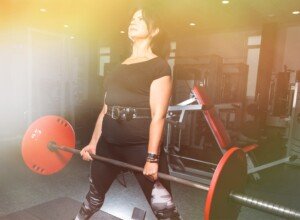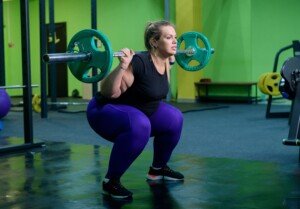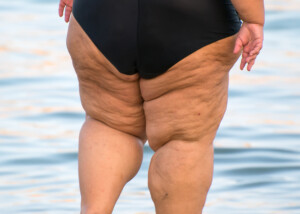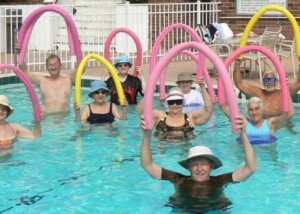
Do not fool yourself into thinking that swimming can replace strength training with weights.
It seems as though swimming laps can replace strength training — as far as the way it can make a body look.
After all, don’t Olympic swimmers have some of the most enviable physiques?
Have you used this fact to convince yourself that as long as you swim at your gym’s pool, you don’t need to lift weights or strength train?
Here is where this line of logic goes awry:
• Olympic or elite swimmers train for hours every single day, beating themselves up to be as good as they are.
Don’t think for a moment that world-class or even college-level elite swimmers spend only an hour a day in the pool.
• Elite swimmers train with weights! You have to wonder how much of their physiques are influenced by barbells and dumbbells.
• Most, if not all, competitive swimmers strength train. There are non-swimming days where these athletes are in the gym.
• Lifting weights makes them better in the water and helps reduce the risk of shoulder injuries.
Obviously, their weightlifting protocol is not designed for bulking up muscles as is the program of a bodybuilder’s.
• How much time do you intend on swimming week after week? You cannot compare yourself to top-competitive swimmers.
Swimming laps trains the body to become more efficient in the water. But this activity will not have an optimal carry-over to dry-land movement.
In other words, lap after lap of the butterfly stroke will not make you much better at hoisting a heavy crate onto a high shelf or lifting a very heavy item off the floor and carrying it down the stairs.
You live on dry land. You lift heavy things (children, sick dogs, garbage, crates of books, luggage, air conditioners, TVs, chairs, wet snow with a shovel) on DRY LAND surrounded by air.
There’s only one way to train for this: lifting weights.

Shutterstock/Reshetnikov_art
Call it weight training, strength training … but weight-bearing exercise on dry land is the best way to maximally strengthen joints, ligaments, tendons, other connective tissue, muscle, and make bones stronger and denser, less likely to fracture.
Now if you enjoy swimming laps, continue doing so. Do so on your off-days from lifting weights.
Or you can swim some laps right after a strength training workout.
But do not abandon weight training just because you swim laps — no matter how many laps you do.
And that’s another point: how many laps. The longer the duration of your swimming of laps, the more this becomes steady state training or long-duration, aerobic training.
Sustained lap swimming recruits slow twitch muscle fiber, which is designed for long, sustained activities (like jogging, cycling, elliptical work, brisk walking, hiking).
Slow twitch fibers are built for stamina and endurance. When you strength train correctly, you’re recruiting fast twitch fibers, which are designed for strength, short bursts of power and force.
Now if you like to swim as fast as possible one pool length at a time, where at the other side, you’re left huffing and puffing hard, barely able to talk, that’s fine.
Rest a few minutes and charge back to the other side of the pool; rest a few minutes, and so on.
This is a form of high intensity interval training (HIIT) and will have more of an effect on your cardiovascular system than on your musculoskeletal system.
It’s great exercise — but it is not a replacement for work with barbells and dumbbells.
Remember, you live and work on dry land. The ability to swim an hour straight will not enable you to lift your unconscious 140 pound mother out of a fire and carry her to safety.
Sure, this crisis will probably never happen, but wouldn’t it be nice to know that you have this ability?
The dynamic benefits of weightlifting and strength training simply cannot be duplicated by swimming laps.
 Lorra Garrick is a former personal trainer certified by the American Council on Exercise. At Bally Total Fitness she trained clients of all ages for fat loss, muscle building, fitness and improved health.
Lorra Garrick is a former personal trainer certified by the American Council on Exercise. At Bally Total Fitness she trained clients of all ages for fat loss, muscle building, fitness and improved health.
.


























